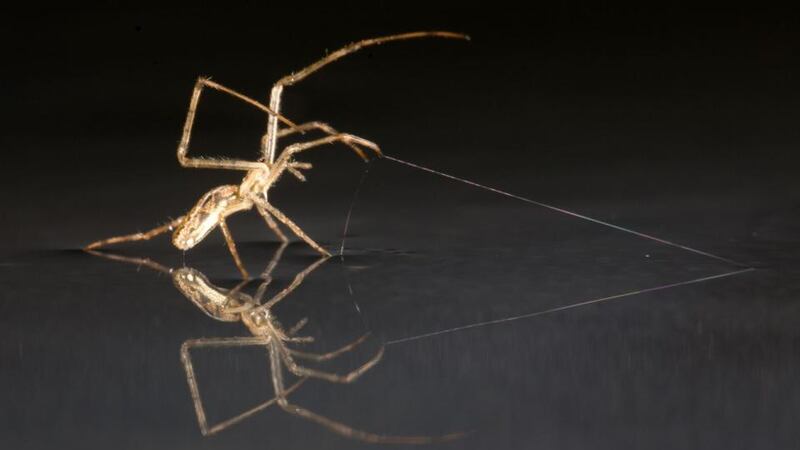Many spider species are adept sailors, sailing across open water with ease and dropping a silk anchor to hold them in place. This and their ability to fly away on spider silk helps explain the success of these eight-legged creatures.
On land or on water spiders have developed effective methods for getting around.
They take to the proverbial wing when "ballooning", spinning out a silk thread which when long enough will carry them away on the wind. They can cover 30km in a day if conditions are right.

Ballooning might seem a risky way to find a new place to live if water is about, with the long standing assumption a watery touchdown would spell disaster.
An international research collaboration has shown however that spiders can move about on the water’s surface just as easily as they take flight.
Charles Darwin when on his travels marvelled at the spider's ability to drop onto the deck of HMS Beagle despite being miles away from dry land, says the project's leader Morito Hayashi from London's Natural History Museum.
Ballooning only gets you where the wind takes you, but the spiders were targeting the boat.
Landing on water proves no problem for them however. “We have now found that spiders actively adopt postures that allow them to use the wind direction to control their journey on water,” says Hayashi. They use silk to drop anchor to hold themselves in place.
They can walk on water so there is no fear of sinking, and they catch the wind by holding up two legs or their abdomens like a sail to control their direction.
They collected 325 adult spiders representing 21 common species from small islands in a Nottinghamshire nature reserve.
These were put through their paces in the lab, sailing about on trays of water. It didn’t seem to matter whether the water was smooth or rough, salty or fresh.
The team, including Mohammed Bakkali at the Universidad de Granada, co author Sara Goodacre of the University of Nottingham and wildlife photographer Alexander Hyde published their findings in the journal BMC Evolutionary Biology.
Spiders could cover “huge spatial scales” when ballooning, says Goodacre. “If landing on water poses no problem then in a week or two they could be a long way away from where they started.”









